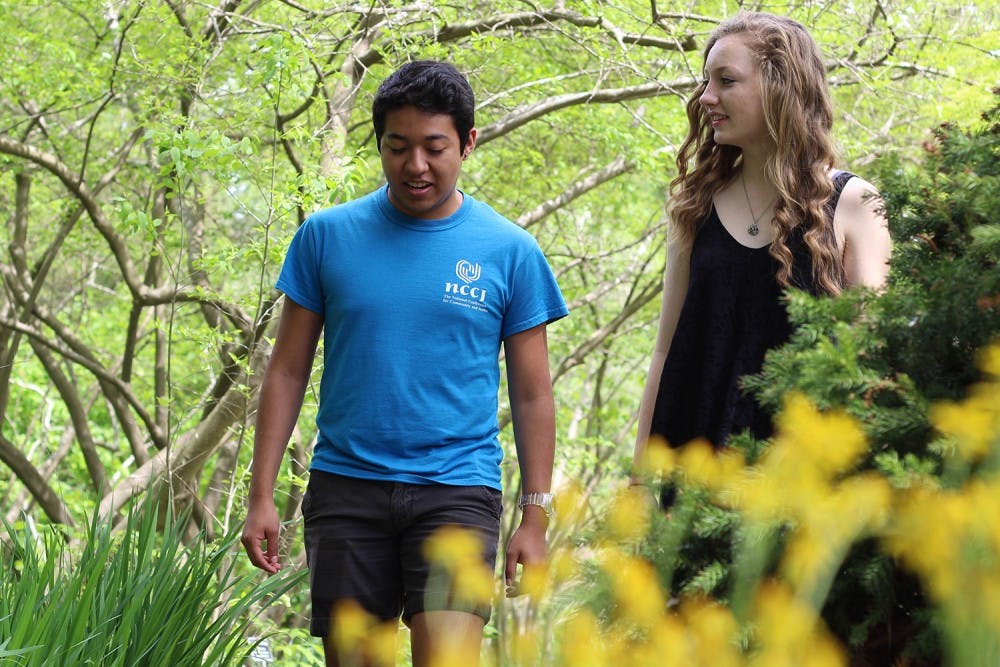UNC-CH’s counseling center saw a 5 percent increase annually in students seeking counseling after improving its walk-in services, said Allen O’Barr, the director of the center, in January. In 2014, UNC-CH had one counselor per 1,800 students.
Though the number of college students seeking counseling tends to increase, university counseling staffing doesn’t always follow. Some UNC-system schools’ counselor-to-student ratios exceed recommendations by the International Association of Counseling Services, which recommends a ratio of one counselor per 1,000-1,500 students.
Anthony Philadelphia, director of Winston-Salem State University’s counseling center, said budget cuts have limited the university to three counselors, which yields a ratio of one counselor per 1,740 students.
“This semester, we saw about the same number of students we saw in the entire year of 2013-14,” Philadelphia said.
Appalachian student Halie Cunningham said her school’s mental health resources haven’t kept up with the student population increase.
“There’s too many students for counseling and health services to take care of them all,” she said.
Anna Smith never used Appalachian’s mental health services. In the last six months of her life, she seemed to be in a good place, Blackburn said.
“She wouldn’t shut up about how much she loved App,” Blackburn said. “She loved the mountain-y atmosphere. She made a ton of friends.”
Cesar Rodriguez, a UNC-CH freshman who was also friends with Smith, said Smith fit in well with the culture in Boone.
“She was very in tune with nature,” said Rodriguez, who admired Anna Smith most for her spontaneity.
Blackburn’s friendship with Anna Smith began in eighth grade when she suddenly invited Blackburn, who was new to town, to manage the boys’ volleyball team with her.
“She didn’t even ask my name,” she said. “She would go up and talk to anybody.”
To get the day's news and headlines in your inbox each morning, sign up for our email newsletters.
But when it came to her depression, Anna Smith was more private, her mother Laurie Smith said. She said her daughter was not able to get the mental health care at Appalachian that she needed.
“I’m not sure if it was embarrassment of needing it, or knowing that it might not meet all of her needs, or the fact that she told several people in her dorm ... that she was going to kill herself, and nobody did anything.”
Laurie Smith said Appalachian should have educated its students on how to appropriately report self-harm threats made by students.
“App could do more to say it’s OK to blow the whistle on your friends ... and to make it cool to go get counseling,” she said. “When people reach out to you and say they’re contemplating hurting themselves ... you have to let a person in charge know.”
The response to tragedy
Between 2009 and 2014, Appalachian saw a 31 percent increase in clients and a 36 percent increase in appointments at the counseling and psychological services center.
In the first seven weeks of the 2015 semester alone, the center saw a 426 percent increase in emergency counseling sessions and an almost 16 percent increase of students served.
Dan Jones, the director of Appalachian’s counseling center, attributes this jump to both the high number of student deaths this school year as well as an increase in mental health awareness training, which leads to more referrals.
A new grant Appalachian received is helping train faculty and staff to identify troubled students. The center expanded its walk-in hours from 23 to 35 hours a week.
Jones said 14 full-time clinicians work at the center, but additional funding will raise that number to 15.
“I do think mental health has gotten more attention as a result of these tragedies, and that is how it should be,” he said.
Cindy Sprinkle, the mother of an Appalachian student who died in November, said her son Jeremy Sprinkle did not want to visit the counseling center. She said he believed it wouldn’t help him because he was limited to short, infrequent visits.
“My child did not want to seek counseling because he felt that he would just be turned away,” she said. “There was just a lack in availability for services at the counseling center.”
Carson Rich, Appalachian’s student body president, said a $600 grant will be used to help pay for a suicide awareness event on Thursday as part of Appalachian’s Mental Health Awareness Week.
A basic misunderstanding
UNC-CH sophomore Solomon Stewart, who has depression and anxiety, said UNC-CH has a toxic culture around mental illness.
“The conversation is starting, but I don’t feel like it’s anywhere near it needs to be,” he said.
Blackburn said when she tells people she’s seeing a therapist, they often assume she’s asking for pity — an attitude stemming from a basic misunderstanding of mental illness.
“They either think you’re crazy, or violent, or begging for attention,” she said.
Taylor Swankie, co-chairwoman of UNC-CH’s mental health awareness group Rethink, said mental health is still seen as a taboo subject.
“Very few students have received education about mental health and mental illness,” she said.
Sprinkle said students need to know it’s OK to get help.
“People just use words like bipolar and ‘schizo’ just when they’re talking about somebody that might be moody that day,” she said. “They’re medical terms that can hurt people.”
Laurie Smith, Anna Smith’s mother, said her daughter never wanted to admit to anyone the depth of her mental health challenges.
She said suicide can be prevented by taking others’ concerns seriously and having open conversations.
“Nobody should have to live knowing there’s something they should have done.”
Amanda Albright
contributed reporting.
enterprise@dailytarheel.com



